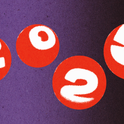Do we live in different taste worlds? You find a white wine unbearably acidic and I find it balanced. The reason may be that you are a so-called “supertaster,” which means that you have more papillae on the tongue than other people. You react more quickly, and negatively, to acidity, bitterness and astringency, all qualities we find in wines. Our reactions can make us wonder whether we have, not just different preferences, but different perceptions of tastes.
About 25 per cent of the population in the west are supertasters. At the other end of the scale are so-called non-tasters, another 25 per cent of people, who have widely-spread papillae and can tolerate high doses of salt and sugar and find acidity and bitterness less aversive. Although the term supertaster suggests great proficiency in discrimination and enhanced eating sensations, it’s not a blessing. Supertasters are often fussy eaters and over-sensitive tasters. When it comes to wine, they tend to find white wines acidic and red wines bitter. Of course, it is a sliding scale, with some supertasters so acutely sensitive to bitterness or acidity that many foods and wines are ruled out, while extreme non-tasters are those for whom no dish is too sweet or too salty. They’ll take five sugars in their tea.
When confronted with the term, most wine critics thought they must be supertasters, and were disappointed to learn that they were not so high up the scale. However, it should be clear by now that they couldn’t perform the tasks they do if they were.
Testing for where people are on the supertaster scale is usually done by assessing their sensitivity to substances like PROP (6-n-propylthiouracil) or PTC (phenylthiocarbamide). People can find them anything from extremely bitter to tasteless. Though the most reliable way of spotting a supertaster is to count the papillae on the tongue. Their distribution is genetically determined and affects how intensely we taste tastes. Is that bound to affect our liking of a wine?
Not necessarily. I’ve written before about the study by John Hayes and Gary Pickering who claim there is a higher percentage of medium-tasters and supertasters among wine experts than among consumers, and that the latter should beware recommendations by the former. But Pickering was clear that much of the difference was due to experience, something consumers could in principle acquire. The researchers merely wanted to point out that the appreciation of wine involves both biology and culture. If so, how do we tease these factors apart?
We know that genetics can affect taste. To some, coriander is delicious, but for others it is soapy. Another dividing line is smell. For many people, asparagus gives their urine a strong odour. Some people do not experience this. Until recently, it was assumed to be due to a metabolic difference, until someone had the idea of letting those who reported the asparagus smell sniff the urine of those who didn’t. The asparagus smell was there, but some people have a genetic variation meaning they can’t smell it. So what about the tell-tale aromas of asparagus in Sauvignon Blanc?
A new study has looked closely at the relationship between genetic variation and the perception of wine characteristics in 599 subjects from Italy and the Czech Republic. It shows that the taste receptor genes for PROP sensitivity are associated with finding increased bitterness in wines, but are not associated with increased astringency or sourness. Non-PROP tasters tend to judge wines as less bitter. A different taste receptor gene is associated with the perceived sourness or acidity of a wine. The importance of this study is that it considers populations of tasters from very different food and wine cultures. In this way, any remaining differences in wine perception can be attributed to genetic variation. So while it is culture as well as genetics that plays a role in wine liking, if you still find many white wines too acidic, we must conclude we are different.

Why does wine taste different depending on who's drinking it?
In vino veritas? The science behind your taste in wine
The same white wine can seem fine to one person and too acidic to another. Why?
October 9, 2017












